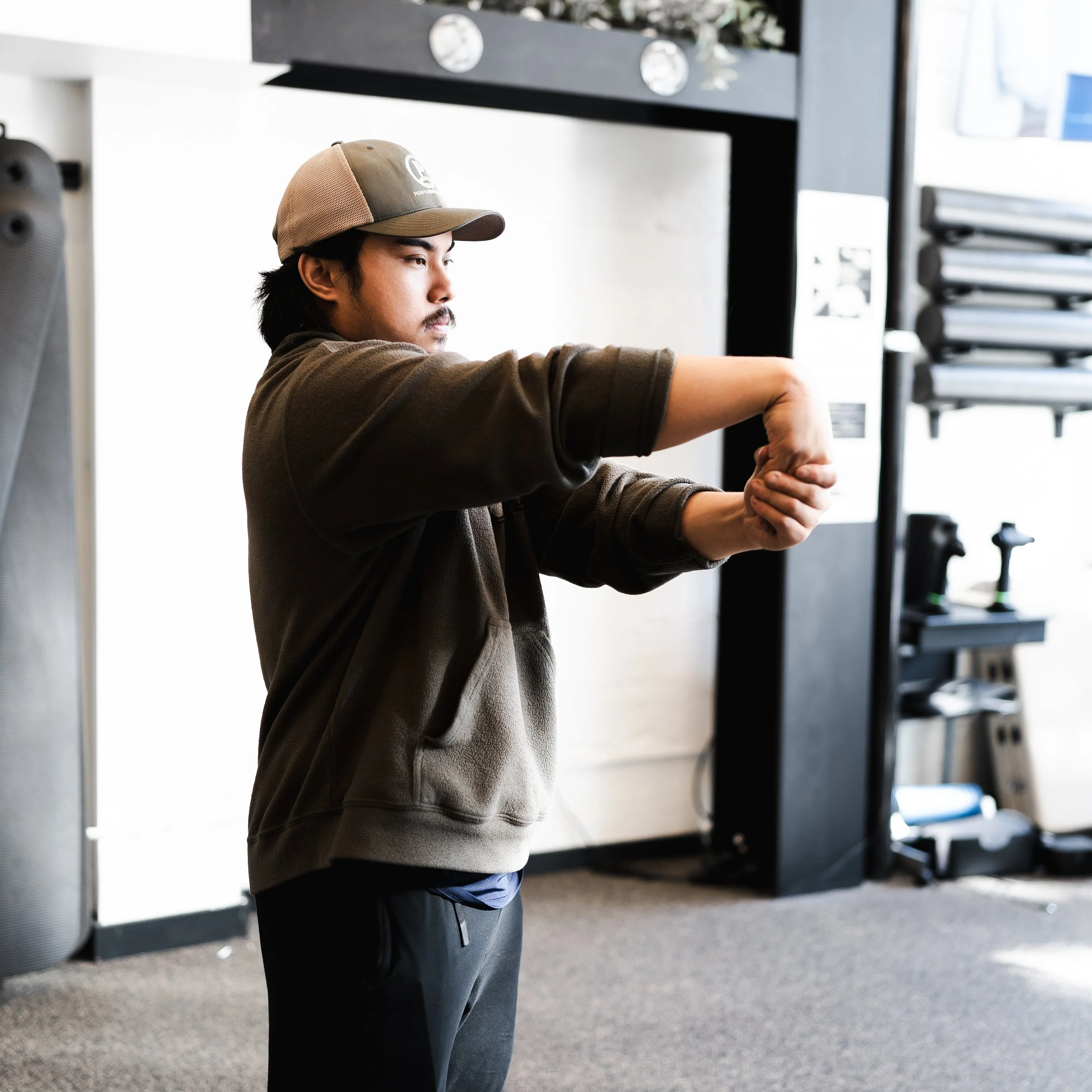Wrist Stability Exercises for Golfers: Master Control and Power
Golf is a game of precision, power, and finesse—and your wrists play a critical role in all three. Whether you’re launching a powerful drive, executing a delicate chip shot, or sinking a putt, the stability of your wrists directly affects your performance. This guide will not only show you the best wrist stability exercises but also help you understand how they translate into better shots and injury prevention.
Understanding Wrist Mechanics in Golf
Your wrists control the clubface angle, which determines the ball's direction and spin. Even slight instability can lead to errant shots. Here’s how wrist stability impacts your game:
Clubface Control: Stable wrists ensure a consistent angle of the clubface at impact, affecting ball direction.
Power Generation: Strong, stable wrists allow you to maintain lag during the downswing, increasing clubhead speed.
Spin Control: Stable wrists help you manage spin for approach shots and chips, giving you better control over ball flight.
Common Wrist Problems for Golfers
Tendonitis: Overuse and poor wrist mechanics can cause inflammation in the wrist tendons.
Sprains and Strains: Sudden impact or twisting can lead to ligament or muscle injuries.
Wrist Impingement: Poor wrist positioning during swings can compress soft tissues, leading to pain.
Wrist Stability Training: Essential Techniques
1. Dynamic Warm-Up for Wrist Mobility
Before you train your wrists, warm them up with these quick mobility drills:
Wrist Circles: Make slow, controlled circles with your wrists, both clockwise and counterclockwise.
Praying Position Stretch: Press your palms together at chest height, then lower your hands while maintaining contact.
Active Wrist Flexion and Extension: Hold your arm straight and gently bend your wrist up and down, using your other hand for light resistance.





2. Key Wrist Stability Exercises for Golfers
1. Weighted Wrist Flexion and Extension
Purpose: Strengthens wrist flexor and extensor muscles for better control.
How to Perform:
Sit with your forearm supported on a bench, palm facing up.
Hold a light dumbbell (2-5 pounds) and curl your wrist up, then lower it slowly.
Switch to palm-down position for extension.
Repetitions: 3 sets of 12-15 reps each side.
Advanced Tip: Slow down the lowering phase (eccentric) to build even more strength.
2. Wrist Rotations with Resistance Band
Purpose: Enhances rotational stability, critical for maintaining clubface control.
How to Perform:
Attach a resistance band to a stable surface.
Hold the band, palm facing inward, and rotate your wrist outward (external rotation) and inward (internal rotation).
Repetitions: 3 sets of 12-15 reps per side.
Pro Tip: Use a mirror to ensure your wrist moves without your elbow compensating.


3. Isometric Wrist Holds (Golf-Specific)
Purpose: Builds static wrist stability for better grip control.
How to Perform:
Hold a lightweight dumbbell (2-5 pounds) in your hand, arm extended forward.
Maintain a neutral wrist position (not bent) for 15-30 seconds.
Repetitions: 3 sets per side.
Variation: Perform this with your golf club for a more realistic feel.




4. Forearm Plank with Wrist Lift
Purpose: Develops wrist and forearm strength while engaging the core.
How to Perform:
Start in a forearm plank, palms down.
Lift one palm slightly off the floor, maintaining a stable position.
Alternate sides.
Repetitions: 3 sets of 8-10 lifts per side.
Advanced Option: Try this on an unstable surface (like a balance pad) for greater challenge.
5. Grip Strength Squeeze (Dynamic)
Purpose: Improves grip strength, directly supporting wrist stability.
How to Perform:
Use a grip strengthener or a tennis ball.
Squeeze for 5-10 seconds, then release.
Repetitions: 3 sets of 12-15 squeezes per hand.
Advanced Tip: Add rapid squeezes for 10 seconds after each set to enhance endurance.
How to Integrate Wrist Stability into Your Golf Routine
Pre-Game: Use the wrist warm-up drills to activate and mobilize your wrists.
During Practice: Focus on wrist stability while practicing different shots. For example, maintain wrist stability during chip shots to improve touch.
Post-Game: Perform wrist stretches and gentle strengthening exercises to promote recovery.
Wrist Recovery Techniques: Keep Your Wrists Healthy
Stretch Regularly: Use wrist flexor and extensor stretches after practice.
Ice for Soreness: If you experience pain, apply ice for 10-15 minutes to reduce inflammation.
Self-Massage: Gently massage the forearm muscles to relieve tension.
Compression Sleeves: Consider wearing wrist compression sleeves during long practice sessions.
Common Wrist Stability Mistakes Golfers Make
Using Too Heavy Weights: Prioritize control over weight.
Rushing Through Reps: Slow, controlled movements activate stabilizer muscles.
Neglecting Recovery: Regular wrist stretching is just as important as strengthening.
Advanced Pro Tips: Mastering Wrist Stability for Golf
Visualize Your Swing with Stable Wrists: Use a mirror to watch your wrist angle during practice swings.
Use Weighted Clubs for Specific Drills: Train with a slightly heavier club to enhance wrist stability, but never during your actual swing practice.
Incorporate Wrist Stability into Your Swing Practice: Try hitting shots with a half swing, focusing purely on keeping your wrists stable.
Monitor Wrist Position During Chips and Putts: Even in short shots, wrist stability is crucial for touch and accuracy.

